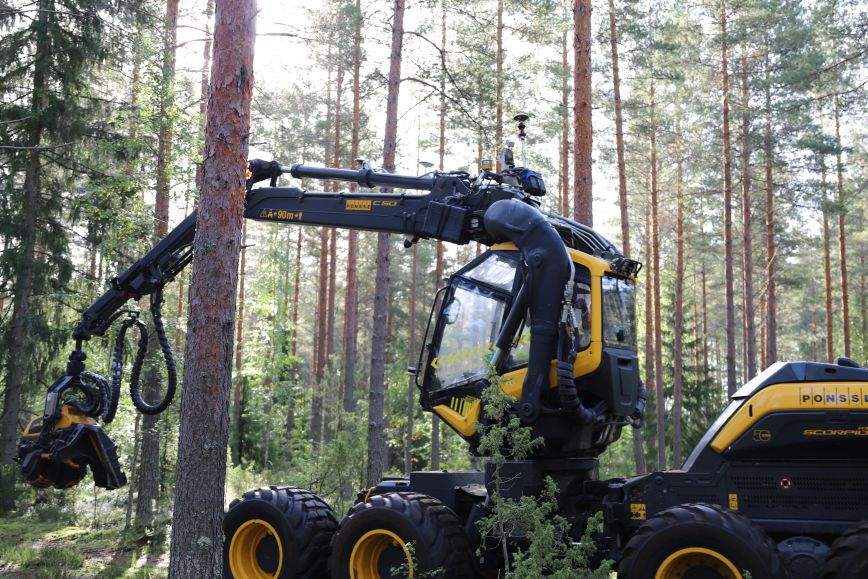Research is conducted in cooperation with the University of Eastern Finland (UEF), the Natural Resources Institute Finland (Luke) and the forest machine company Ponsse. The Finnish Geospatial Research Institute (FGI) of the National Land Survey of Finland (NLS) leads the project, focusing especially on improving the accuracy of positioning and developing sensor technologies.
Accurate measuring data helps optimise forest management
The first felling trials were conducted in autumn 2023 to collect accurate data about trees using laser scanners mounted on a forest machine as well as satellite positioning. The measurements provided huge volumes of point cloud data, based on which researchers are analysing the environment using various methods.
The measuring data helps develop ways to mechanically locate and identify sites that are important considering biodiversity and carbon sequestration, including old aspens, decayed trees, streams and buffer strips. When these can be identified, optimal choices can be made during harvesting to strengthen carbon sinks, for example. The data can already be used when planning harvesting activities which also produces financial benefits.
‘We seek to identify different tree species and the condition of each tree and update them on a map as accurately as possible. Considering carbon sequestration, forest machine operators could be guided, for example, to fell damaged trees that are likely to grow poorly,’ says project leader Harri Kaartinen from FGI.
Technology makes the quality of harvesting more even
Laser scanning using forest machines is an excellent way to collect data about trees, as up to 2,100 machines are operating every day across Finland. Ponsse is already testing forest machines with laser scanners mounted on them in real-life conditions.
The goal is that, in the future, machine-mounted technology provides operators with guidance so that the responsibilty of individual operators has a smaller impact on the success of harvesting. For example, any thinning carried out too roughly would be easier to avoid. At the same time, forest machines can provide documents for forest owners or, say, the authorities.
‘New sensor systems can support machine operations in decision making, also reducing workloads,’ says Kaartinen
Further information
Harri Kaartinen, Research Professor, firstname.lastname@nls.fi, +358 29 531 4756
Read more about the project.
Read the article from Natural Resources Finland (in Finnish): Kuljettajaa avustavat järjestelmät puunkorjuun ja sen suunnittelun tukena
Read more about the topic in the Finnish Forest Industries blog (in Finnish): Technology helps measure biodiversity in harvesting.

The research has been conducted in the Reseach Council of Finland funded Flagship
UNITE, that researches and develops the forest-human-machine interplay. The UNITE competence center has research groups from the University of Eastern Finland, the Finnish Geospatial Research Institute at the National Land Survey of Finland, the University of Tampere and the Natural Resources Institute Finland (Luke), as well as an extensive network of co-creation partners.
The project is also part of the Catch the Carbon climate package funded by the Ministry of Agriculture and Forestry of Finland. Read more about the program: Climate measures in the land use sector.


